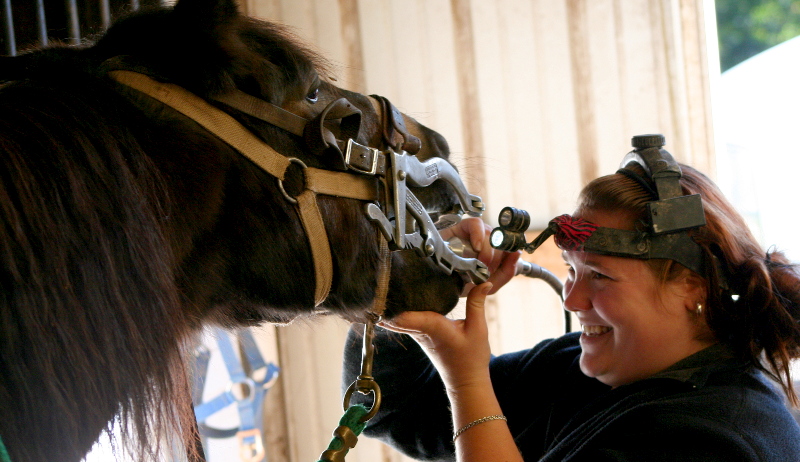
Dog and cat owners are becoming increasingly familiar with dental cleaning recommendations for their pets. Special toothbrushes and pet toothpaste are available at pet supply stores. Meanwhile, bringing your pet to the vet for a “dental” is so much like what humans go through, apart from the general anesthesia, that even the tools used are similar. In fact, dogs and cats can even get root canals. But what about our farm animals? Should you brush your horse’s teeth?
In the horse world, dental care is a universe apart from what goes on in the small animal clinic. For horses, dental care focuses on filing their teeth, not cleaning them. The reason for this lies in the nature of the horse itself: Being an herbivore, horses (and other grazing animals such as cattle and goats) are hypsodonts, meaning they have teeth with a lot of crown that continually grow to make up for the constant grinding when grazing. This is in contrast to brachydonts such as humans, dogs and cats, whose teeth do not undergo the same amount of wear and tear and therefore do not continually grow. This continuous growth makes it a fairly simple task to roughly estimate a horse’s age by its teeth.
As an anatomical rule, a horse’s upper jaw (maxilla) is slightly wider than its lower jaw (mandible). As the horse ages and the teeth continue to grow, the outside edges of the molars in the maxilla begin to grow sharp edges, as do the inside edges of the molars in the mandible. These edges can cause open sores in the mouth.
Sometimes an older horse loses a molar. When this occurs, the unopposed molar on the opposite side has nothing to grind against, resulting in uneven tooth wear. Occasionally, the back of an older horse’s mouth resembles a mountain range. Accordingly, experts recommend regular dental checks as a way to ensure older horses are healthy; uneven teeth is the No. 1 reason older horses have trouble keeping on weight, especially in the winter.
The act of filing these pointy edges is called floating, and the rasps used are called floats. When a horse’s teeth are floated, the horse is usually sedated. This way, a vet can hold open the horse’s mouth with an instrument called a mouth speculum then take a good look around and then files down any sharp edges (called “points”).
The goal of floating is not to smooth out a horse’s teeth; the tooth’s naturally irregular surface is required to efficiently grind roughage such as grass and hay. Floating is only used to file off sharp points in order to prevent damage to the soft tissue of the cheeks and tongue.
But what about cows, sheep and goats? Do they need dental care? The short answer is: usually no. One reason is that these animals are ruminants—their natural act of digestion involves chewing cud, meaning regurgitated roughage. This means cows, sheep and goats spend more time chewing than even horses that graze. Horses, by contrast, are not ruminants and do not chew cud.
Another interesting difference between ruminant and horse teeth is that sheep, goats and cows do not have upper incisors like a horse does. Instead, on their upper front gums, they have what’s called a dental pad—a thickened area of gum in which the bottom incisors press against to tear off grass. These animals still have molars on top and bottom, though.
Because of the nature of livestock diets, we usually don’t worry about gingivitis and periodontal disease like we do with dogs, cats and humans. That’s one of the nice things about being an herbivore.




